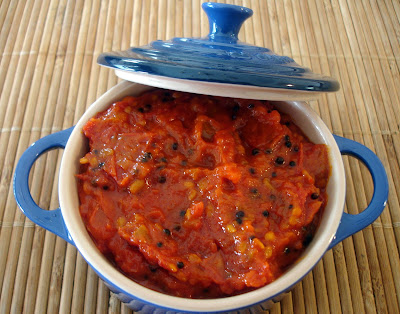Anand's company had a charity pie-contest today. The pie slices were sold for $3 a piece, with the intention of raising money for the food bank (I think). Since Thanksgiving is around the corner, there have been initiatives within our little town to donate food or money to the food bank, so that everybody gets to have a decent Thanksgiving meal.
On Friday, Anand nudged me to sign up for this contest. I'm glad I did, even though this is my very first pie! Having never attempted a pie before, I searched for some easy recipes that didn't require too much effort or skill in making the ever-challenging pie crust. My culinary mentor, Ina Garten, came to the rescue, as always!
Here is the recipe I followed. There is even a short video clip with this recipe. Although this is a key lime pie, it is acceptable to make this with regular limes. Key limes are difficult to find here; especially at this time.
The basic formula:
- The crust is made from graham cracker crumbs. Mix the crumbs with some sugar and melted butter and press it on the inside and sides of the pie pan. To ensure easy serving of the pie, I buttered the sides of the pan and placed a disc of parchment paper at the bottom of the pan before preparing the crust. And, I used chocolate graham crackers instead of regular.
- Bake the crust for 10 minutes at 350 F and allow it to cool.
- The custard is quite simple. Beat together egg yolks, sugar, lime zest, lime juice, vanilla, and sweet condensed milk. I also added 1/2 teaspoon of salt and a couple of extra spoons of sugar, for I felt the batter was too tart. So, taste your batter and decide accordingly. It depends on how tart the limes are. Borrowing from our Indian method of making lemon juice, I knew the addition of salt would cut the tartness and bring out the flavors much better.
- Pour the custard into the prepared crust and freeze overnight. Serve with whipped cream!
How easy is that? The sad part is I couldn't taste the pie to judge if it was any good! And, I couldn't decorate it due to transportation challenges. So, I entrusted that precious responsibility to Anand. I handed him a can of whipped cream, some lime wedges, and detailed instructions, demonstrations, and diagrams on how to decorate before serving. He decided to innovate with the whipped cream decoration, but it still looks pretty! I'm so proud of him for mustering the patience to do this... and photographing it ;).
And, the results of the contest are in! It's incredible that this entry won the first place in the cream-pie division in the company! We are donating the $75 won from this contest to charity as well.
Thank you Ina, for your marvelous and easy to prepare recipes!









